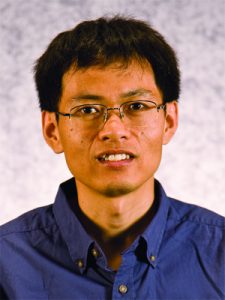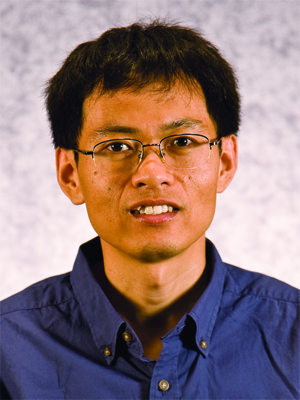 Song Zhang, William and Virginia Binger Assistant Professor of Mechanical Engineering, was elected a 2014 fellow of the Society of Photo-Optical Instrumentation Engineers (SPIE). SPIE, the international society for optics and photonics, promotes members as new fellows of the society to honor them for their technical achievements, for their service to the general optics community, and to SPIE in particular.
Song Zhang, William and Virginia Binger Assistant Professor of Mechanical Engineering, was elected a 2014 fellow of the Society of Photo-Optical Instrumentation Engineers (SPIE). SPIE, the international society for optics and photonics, promotes members as new fellows of the society to honor them for their technical achievements, for their service to the general optics community, and to SPIE in particular.
While 3D imaging wasn’t a common research subject ten years ago, emerging opportunities for 3D technology in a variety of fields have placed high demand on Zhang’s area of interest. Zhang became involved with 3D technology during his time as a graduate student, when he worked on a project that was ultimately successful in diagnosing and treating lung cancer patients through the 3D imaging of lungs.
“Once we got it to work, a lot of people in computer science got very excited about that because around 2002, 2003, when I got the first system working, the computer science people were trying to do photorealistic 3D video; for example, King Kong,” Zhang said. “But the problem is it’s very painful for people to capture impressions of the human face. They saw the work we did and said, ‘this could be a huge field to the computer science society.’”
Zhang spent a few years working on development of 3D technology in the computer science field before coming to Iowa State, where his research caught the attention of John Deere. From there, the company funded a project that aimed to improve their design. Zhang also explored the use of 3D imaging in the manufacturing sector as a way of inspecting parts on the production line. With a 3D camera, a computer can compare newly made parts to a design model with greater efficiency than previous inspection methods.
The next field where Zhang would like to continue 3D development is telecommunications, which could potentially impact the everyday life of anyone with a computer or smartphone. A recent prototype he developed with Nik Karpinsky, an ISU doctoral student in human computer interaction, allows users to participate in 3D teleconferencing, and may be available on smartphones in the next few years. “We think it’s doable, the processing power on the phone is there already,” Zhang said.
The medical field also holds several possibilities for 3D development. 3D images could allow doctors to better monitor the progress of skin cancer patients who need to be treated over a long period of time. Surgeons could perform remote surgery from an office anywhere in the world through the coordination of 3D imaging and robotics.
“The technology is here, and now we just have to see whether we can make the technology useful,” Zhang said.
Zhang is already working in a popular research area, and his recent election to SPIE Fellow may further expand opportunities for collaboration. “To some extent, it will help me in the sense that if you’re a fellow in the community, other people will have the perception that you are doing well,” Zhang said.
Zhang was recognized as a fellow at the SPIE Photonics West conference in February in San Francisco.
